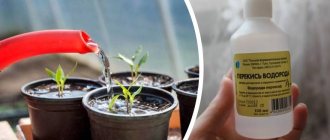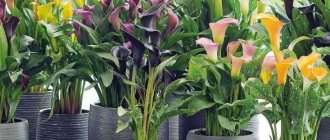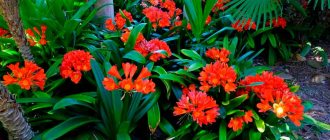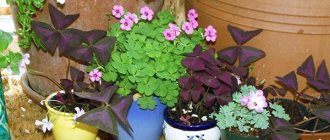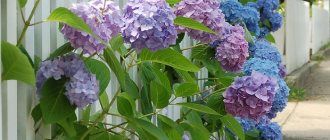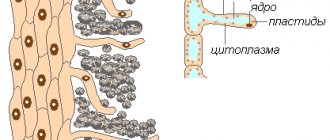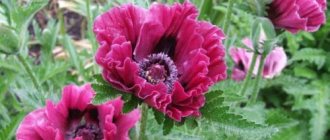The varieties of plants adapted for home conditions are determined by the temperature in the room. Often, ignorance of the characteristics of a particular flower leads to failure in its cultivation. Depending on the temperature in the room, ornamental plants are divided into three categories:
- Cold-resistant plants - from 8 to 14 degrees.
- Moderately heat-loving plants - from 14 to 17 degrees.
- Heat-loving plants - from 18 to 20 degrees.
Heat-loving plants will be discussed in more detail. Let's start with the fact that for the successful growth and development of such plants, the temperature in the room must be uniform, without sudden changes, so they should not be placed close to heating devices and open windows. Not only the upper parts of plants, but also their roots can suffer from temperature changes. Because of this, the soil temperature also needs to be carefully monitored. Let's look at specific examples of heat-loving plants.
Aphelandra
This plant is native to North and South America. There are more than 100 species of aphelandra. As a rule, it is low-growing, no more than 25 cm in height, has succulent stems, leaves are bright green with obvious white stripes. At the end of summer, during flowering, spike-shaped flowers similar to cones appear. After flowering is completed, the buds must be removed, otherwise the plant begins to form seeds that will ripen by winter. Aphelandra is a very capricious plant, and growing it at home will require a lot of effort. Such as selecting the right soil, enriched with minerals, introducing various complementary foods, sufficiently bright lighting, but without direct sunlight. Therefore, in the summer it is necessary to create shade for it, and in the winter, additionally install fluorescent lamps. Without this, the plant will lose its healthy appearance and flowering may be disrupted.
Caladium
Caladiums are sold as tubers and ready-made plants. Caladium can grow in the shade, but loves indirect bright light. The soil should be moist but not wet. Caladium loves warmth - from 15 to 30°C. If the leaves begin to turn yellow, let it dry out and rest until spring. Store it in a cool, dry place and replant in February or March.
Photo: Shutterstock
Coleus
Coleus has more than 150 varieties. It reaches a height of 80 cm. It is distinguished by its bright colors and ease of care. The leaves of the plant resemble nettles and are green, red and burgundy. Coleus tolerates sunlight well, but in the dry season you need to create shade for it, otherwise the plant will lose its color and begin to turn pale. The plant does not require special care. It is enough to water it with warm water and make sure that the soil is not dry, and feed it with liquid fertilizers containing potassium 2 times a week. In winter, feeding can be done once a month.
Nuances of caring for plants on a southern windowsill
When choosing a plant that can cope with the conditions of a hot southern window, you should always remember that at a young age and during budding and flowering, all plants are much more sensitive than usual. Even in the most hardy species, direct midday sun can leave marks on the delicate petals, and seedlings completely burn out in such a location in a matter of hours.
Whether there is protection from direct sun or not, nothing will change the need for enhanced plant care on a south-facing window. Watering here is needed much more frequently, the substrate dries out faster, air humidity drops easily, even using a tray with wet moss or expanded clay is less effective.
Peperomia
This plant is just gaining popularity in Russia and is therefore little known. The main advantage of the flower is its small size and ease of care. So far, about 50 types of peperomia are known. The height of the plant is from 35 to 50 cm, the color of the leaves is very diverse, from light green to dark emerald, sometimes silver or golden. The leaves are round in shape with a short petiole and smooth to the touch. The flowers of the plant have the shape of long tails covered with balls.
Peperomia is known for its medicinal properties and the presence of one or more plants in the house is an excellent prevention against colds. Flower growers also suggest that it has a beneficial effect on the digestive tract.
The conditions for keeping the flower do not change depending on the time of year, it is indifferent to humidity, only young plants under 3 years of age are replanted. For irrigation, you must use heated, settled water with the addition of citric acid. To feed the flower, you can use any liquid mineral complex.
Is a warm winter more dangerous than an abnormally cold one?
Paradoxically, an abnormally cold winter with a lot of snow is less dangerous for heat-loving plants than a warm winter, but after which significant return frosts often occur. This, for example, happened with the very beautiful ornamental Matsudana willow on our site.
The tree grew in our garden for more than 5 years. During this time there were quite frosty winters. Some of the branches froze, the tips of others froze, but over the summer the willow was completely restored and increased in height. But suddenly, after one warm winter and serious May frosts, the lush three-meter tree completely died. I couldn’t find the strength to give even the slightest root growth.
Also, many gardeners regularly lose heat-loving plants after the so-called “black winters” (long severe frosts without snow), which occur after several warm winters, when the plants seem to have already become accustomed to the site and have reached large sizes.
Each plant needs a certain amount of positive (active) temperatures during the growing season. It is, of course, higher in southern plants than in the natives of the middle zone. As you know, the southern regions are characterized by long, hot summers and late autumn. And during this time, the plants have time to accumulate nutrients and prepare for the dormant period.
But in the middle zone, summer, at best, can linger until mid-September, after which rainy and noticeably cold days begin, which is not to the liking of representatives of heat-loving flora. A long cold spring, which is also not uncommon in our area, is an additional stress factor for southern plants. Such plants are not accustomed to stocking up on nutrients to last through a long, unfriendly spring.
In addition, warm “underwinters” often provoke the same “underflight”, which does not reach the climatic norm. Our ancestors observed a similar relationship, which was fixed in folk superstitions: “Fierce winter - sultry summer,” “If it’s warm in winter, it’s cold in summer.” Modern scientists confirm this state of affairs and give scientific explanations for this.
In simple words, this can be explained this way: in nature, everything is interconnected, and as you know, nothing disappears or appears out of nowhere. And while the cold is absent where it should be, “cold reserves” are gathering in the Arctic, and in the future they will certainly “take their toll” and end up on our territory. This can happen both in spring and summer. And the lack of active temperatures, as we noted above, negatively affects the endurance of plants.
Winter 2019-2020 turned out to be exceptionally warm across most of Russia
Saintpaulia
Simply put - violet. Blooms all year round. The flower has many shades - white, pink, purple, red. The shape of the leaves is elongated, the leaves themselves are fleshy. The main condition for proper cultivation is proper lighting, and this means diffused light for 11 hours a day. It is also necessary to eliminate drafts, they have an adverse effect on Saintpaulia flowers. You need to water the plant so that water does not fall on the leaves, as a result they quickly begin to rot; to avoid this, pre-settled water should be poured into the tray of the pot.
Sankhetia
Of all the varieties of Sanchetia, only one type of plant is grown at home - Sanchetia nobilis. It reaches a height of 1 meter, the leaves are large, bright green with golden veins. With proper care, flowering is possible. The flowers are tubular, spike-like, yellow or orange. In winter, it is necessary to provide additional lighting, otherwise the leaves will lose their color and begin to fall off. It is necessary to water the sanchetia abundantly and often, not forgetting to spray the leaves, and this must be done with warm and always boiled water. Fertilize the flower with mineral and organic fertilizers containing nitrogen.
The most light- and heat-loving plants
Determining which plants to look for for a southern window sill, especially if we are talking about large windows, is not at all difficult. These are species that in nature are accustomed to very bright lighting, open areas and fairly hot temperatures - inhabitants of deserts and tropics. Such plants belong to the category of the most demanding species in terms of lighting intensity, the minimum permissible indicators for which are 10,000 lux. First of all, you should take a closer look at representatives of several classic “southern” categories:
- succulents - Sansevieria, Crassula ovata, Echeveria, Euphorbia, Aechmea;
- desert, classic cacti (cereus, mammillaria, echinocactus, prickly pear; unlike forest and epiphytic species, they are completely insensitive to direct southern sun);
- caudex - crops with thickened bottle-shaped stems, for example, adenium and bocarna;
- fruit-bearing indoor plants (coffee tree, olive, fig, citrus and other Mediterranean and southern species);
- garden and indoor plants - from bells, catharanthus, roses, gerberas, thunbergia, santolina, hydrangea to tulips, hyacinths and other bulbous plants, including bright tubs - bougainvillea and abutilon;
- sun-loving palms and false palms (date, cordyline, livistona, yucca).
But you don’t have to limit yourself to the classics. Such fashionable plants as beautifully flowering begonias, oleander, billbergia, variegated ficus, parthenocissus, pachypodium, crinium, hippeastrum, sprekelia, agapanthus, cattleya, eucalyptus, osmanthus, anigozanthus, brachychiton, bouvardia, cyperus, chlorophytum, episcia also grow well on southern windows.
Do not forget that even the largest southern window can be made a place comfortable for almost any plant with the help of simple shading, a protective, diffusing screen or curtain - basic protection from scorching rays. With the screen, withstand southern windows and many lovers of eastern and western windows - rhododendron, balsam, wallot, calceolaria, saxifrage, passionflower, nerine, calla lilies, clivia, cyclamen, Jacobinia, ginura, laurel, coleus, hibiscus, myrtle, leptospermum, clivia, pandanus etc.
When choosing plants for a southern window sill, you can also go “inversely” - identify plants that do not belong on a window sill with a southern orientation. You need to give up all plants that are afraid of temperatures above 25 degrees, preferring soft diffused lighting, partial shade and shade.
Begonia
Indoor begonia pleases the eye of gardeners all year round and has many varieties. There are both small bushes 5 cm in height and large ones up to 3 meters. There are more than 1000 species of begonia. It mainly has carved leaves and voluminous flowers of various shades.
For the harmonious development of a flower, you need to choose the right place in the apartment, where there will be enough light for it, since the speed of growth will depend on the illumination. And this place must be permanent so that changes in light and temperature cannot destroy the plant. In summer, begonia should be watered generously with settled, clean water, but it is not recommended to spray the leaves, as this may cause unsightly spots to appear on them. In winter, watering should be reduced and the pot carefully insulated.
To prevent begonia from looking exhausted, it requires fertilizer. These are complex mineral mixtures created specifically for this plant. Feeding is carried out in spring and summer 1 or 2 times a week. But if the flower does not stop blooming even in winter, complementary feeding must be continued.
Dieffenbachia
Dieffenbachia is native to South America. This is an evergreen, showy plant with elegant, large leaves. It is very popular among flower growers. But it has one drawback - the milky sap of the plant is poisonous, can cause swelling of the larynx and tongue, and if it gets into the eyes, it can cause blindness. Therefore, it is not recommended to acquire this plant if there are animals and children in the house. Caring for Dieffenbachia begins with choosing a place where there will be good lighting, but without direct sunlight, as the leaves can get burned. Due to lack of light, the leaves of the plant become small and lose color. Watering the flower should be regular, using settled melt or rain water, or boiled water. It is also necessary to spray the leaves daily and clean them of dust. In order for the Dieffenbachia to be straight and the leaves on it to be evenly spaced, it must be illuminated from above and constantly turned in different directions towards the light. Since the plant has large volumes, it constantly needs nutrients in the form of mineral fertilizers. You need to feed them in spring or early autumn once every 10 days. Fertilizers should be high in nitrogen.
South windows are different
The conditions in the rooms depend not only on the orientation of the windows in relation to the cardinal points, but also on the size of the window itself. A small window with a screen will be comfortable even for shade-loving plants; without protection, you can grow any light-loving species on it. Large south-facing windows are only suitable for the hardiest succulents and species that can withstand extreme heat.
They radically change to the soft conditions of southern window sills where large trees grow near the house, the window is located near a balcony or loggia. Changes lighting and thoughtful window decoration, sun protection (blinds and screens), mosquito nets. In this case, all the same crops are suitable for the southern window sill as for the eastern or western ones.
It is also worth remembering how warm the room is, how it is ventilated, heated, and air-conditioned. In cool large rooms, problems with overheating decrease, in small and hot rooms they only increase.
Anthurium
Anthurium is native to the subtropical forests of Central America, so maintaining it at home will require a lot of effort. The flower has more than 900 species. The plant has large, heart-shaped leaves with bright veins. Flower colors come in red, pink, green and yellow shades. Anthuriums are extremely demanding on lighting; it must be bright, but without sunlight; in winter, the room must be equipped with fluorescent lamps; without proper lighting, the plant will wither. The plant also needs high humidity, it is necessary to water it 3, 4 times a week, as well as spray the leaves, it is advisable to provide the room with a humidifier. The flower also needs regular replanting and soil fertilization.
Beloperone
Beloperone has more than 60 varieties. The plant is a shrub with bare and slightly pubescent leaves of a round shape, red, orange or yellow. It blooms all year round. Grows in warm, ventilated and well-lit areas. The flower should not be watered frequently; the soil should not be waterlogged. Drying should also be avoided, otherwise the plant will lose all its flowers and leaves. The plant requires constant, weekly feeding due to year-round flowering. Young beloperones must be replanted annually, and bone meal must be added to the soil so that the plant takes root better.
Hibiscus (Chinese rose)
Hibiscus quickly adapts to new conditions and can bloom in winter if kept in the light. The plant can be pruned, but hibiscus grows very slowly in winter, so you may not even see any growth. Let the soil dry out between waterings, but you can spray the plant at least every day. If you don't have a sunny window, give your hibiscus a cool spot with medium-bright light and let the leaves fall so the plant goes dormant. Make sure that aphids do not appear.
Photo: Pixabay
Blekhnum
Blechnum is a type of fern with bright green, leathery leaves and a short rhizome. Loves high humidity; if it is not possible to create humidity in the room, then it is necessary to create it inside the pot. It is necessary to water the blechnum daily, but do not allow stagnation of water so that the plant does not die. The plant needs to be replanted once a year in soil containing peat. Blekhnum is afraid of sunlight, so it should be placed in the bathroom or kitchen, next to the sink, most importantly away from the window. For many heat-loving plants, a number of general rules can be distinguished:
- In summer, it is best to stay in the fresh air, mainly during daylight hours, while avoiding drafts.
- Direct sunlight should not touch the plants.
- In the cold season, it is necessary to remove the plant from the window and provide it with good lighting.
By following them, plants receive proper care, and their owners can enjoy the beauty of their pets all year round.
Spicy herbs: basil, chives, parsley, lemongrass, rosemary
Most greens grow very well indoors. Annual and biennial plants like basil are best wintered as young plants. Chives are unpretentious when moving indoors, and even if the plant is frostbitten, it will come to its senses indoors in a pot. Perennial plants such as lemongrass and rosemary can be potted and moved from the garden to the windowsill. These plants love light, otherwise they will stretch their stems. To keep plants bushy, trim them and use them for cooking.
Source

